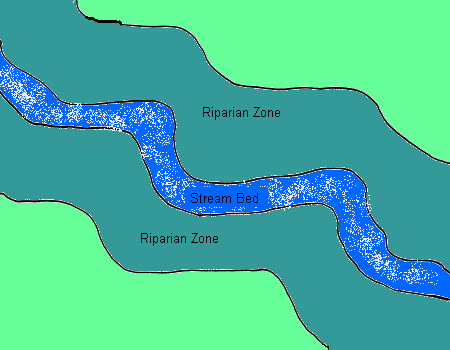A lot of thought has gone into what Sidmouth's largest public open space should be looking like.

BEE Project for Sidmouth gets £50k grant - News - Sidmouth Herald
Firstly, there has been care taken not to mow the grass right up to the River Sid's edge.
As the Parks Development Officer has said to this blog: The meadow areas by the river will be cut and removed in the next week or so – before the dock seed ripens. Most of the grasses have set seed now.
Even in winter, vegetation runs down the banks:

Landscape design, playground design, garden design, outdoor space design | Aileen Shackell Associates Limited

BEE Project for Sidmouth gets £50k grant - News - Sidmouth Herald
Firstly, there has been care taken not to mow the grass right up to the River Sid's edge.
As the Parks Development Officer has said to this blog: The meadow areas by the river will be cut and removed in the next week or so – before the dock seed ripens. Most of the grasses have set seed now.
Even in winter, vegetation runs down the banks:

Landscape design, playground design, garden design, outdoor space design | Aileen Shackell Associates Limited
This chimes very much with current thinking:


It also chimes with what other authorities are doing:

Water vole (Arvicola terrestris), Kent, UK | Terry Whittaker Photography
Tall riverbank vegetation is left unmown to provide food and cover for our dwindling water vole (Arvicola terrestris) population. These agile swimmers, which make their homes in the banks of the river provided the inspiration for Kenneth Grahame’s character Ratty, in his book The Wind in the Willows. www.staffs.ac.uk/assets/M426 Nature Reserve leaflet_tcm44-21568.pdf

Do not alter riverbanks or sandbars. Do
not strip away the natural vegetation from these areas. Let
vegetation grow unrestricted on beaches, river banks, and sand dunes.
These help to stop shoreline erosion. How You Can Help
- Save The Salamanders

Riparian zones are areas of vegetation between the river and the surrounding land use, usually a lawn or field. Riparian zones have the capacity to buffer rivers and other waters from polluted runoff from agricultural, urban, residential or other land uses. Healthy riparian zones can absorb sediments, chemical nutrients, and other substances contained in polluted runoff.
They also provide for groundwater recharge, diverse habitats and water storage and release. A healthy, functioning riparian area and associated uplands dramatically increase benefits such as fish and wildlife habitat, erosion control, forage, late season stream flow and water quality.
What Can YOU Do to Protect the Water Edge?
• Don’t Mow to the Waters Edge - Lawns mowed to the water’s edge will do little to control shoreline erosion. In fact, removing native vegetation and replacing it with turf grass usually results in accelerated stream bank and shoreline erosion that degrades water quality. A buffer between 15-25 feet is usually suitable, the more the better. www.mywatersheds.org/publications/Final Copies - News articles/Riparian article.pdf

Water vole (Arvicola terrestris), Kent, UK | Terry Whittaker Photography
Tall riverbank vegetation is left unmown to provide food and cover for our dwindling water vole (Arvicola terrestris) population. These agile swimmers, which make their homes in the banks of the river provided the inspiration for Kenneth Grahame’s character Ratty, in his book The Wind in the Willows. www.staffs.ac.uk/assets/M426 Nature Reserve leaflet_tcm44-21568.pdf
.
And so the quality of the wildlife benefits, for all to enjoy:
Here are our very own riparian zones, together with wild flower meadows and community orchard, as depicted on several displays by Aileen Shackell, the project manager on the Byes Environmental Education (BEE) Project.
Landscape design, playground design, garden design, outdoor space design | Aileen Shackell Associates Limited
These are the interpretation boards which have gone up in the park over the last couple of months:
... at Sid Meadow
... at Fortescue
... at Sidford.
.
.
.
Landscape design, playground design, garden design, outdoor space design | Aileen Shackell Associates Limited
These are the interpretation boards which have gone up in the park over the last couple of months:
... at Sid Meadow
... at Fortescue
... at Sidford.
.
.
.





No comments:
Post a Comment